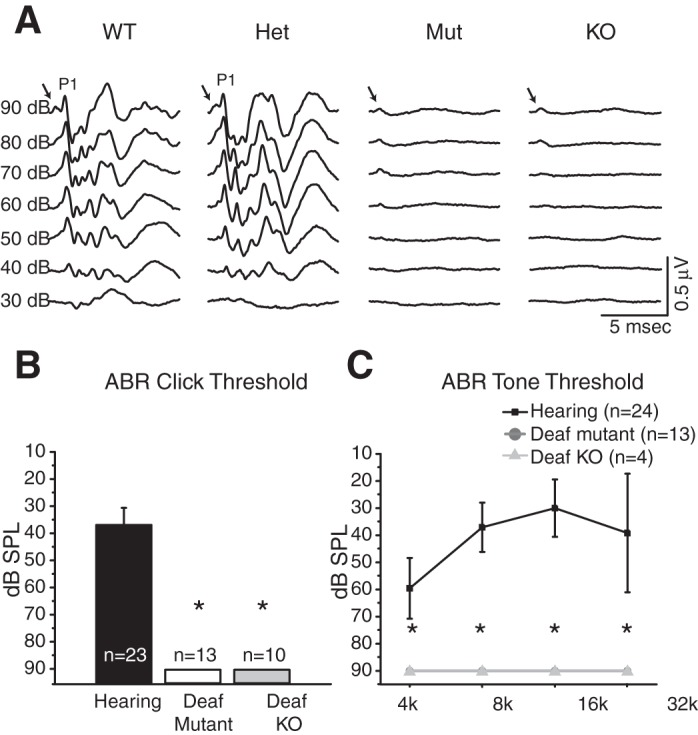Fig. 2.

Auditory brain stem responses (ABRs). A: clicks, 0.1 ms in duration and alternating in polarity, evoked a series of positive and negative waves that reflect the activity of neurons in the brain stem in the hearing genotypes, wild-type (WT) and heterozygote (Het) Otoferlin mice. A small positivity that was graded with the intensity of clicks (arrows) was the remnant of a receptor potential that was not removed by averaging responses to clicks of alternating polarity. The first positive wave (P1) reflects the synchronous firing of auditory nerve fibers, while later waves reflect electrical activity of downstream circuits in the cochlear nuclei and superior olivary complex (Melcher and Kiang 1996). The absence of all but the first positivity in the deaf Otoferlin mutant (Mut) and Otoferlin knockout (KO) animals indicates that acoustic signals fail to propagate through the circuits of the brain stem and shows that these animals are deaf. The brief inflection at the beginning of each trace (arrows) likely reflects a receptor potential. B: averaged hearing thresholds for the click stimuli. C: hearing thresholds for the tone stimuli at 4, 8, 16, and 32 kHz show that wild-type and heterozygote hearing control mice hear best at ∼16 kHz and that Otoferlin mutant and Otoferlin knockout animals do not hear at any frequency. *Statistically significant differences relative to hearing controls.
